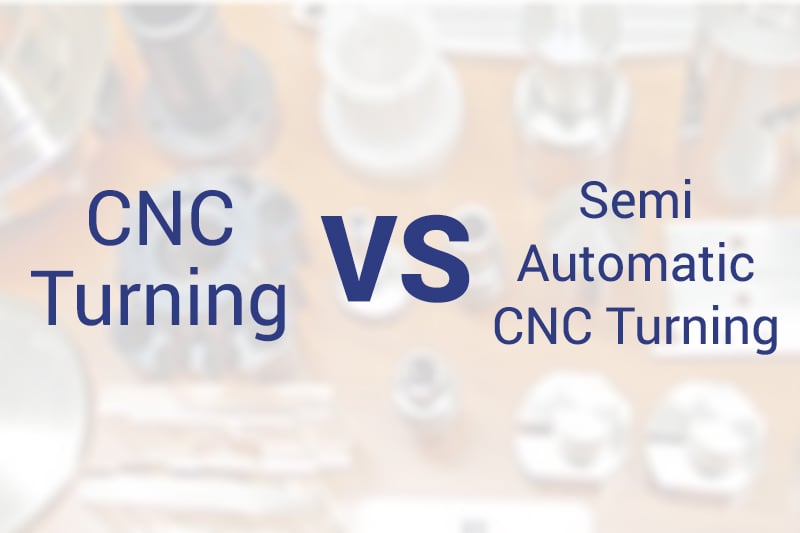
CNC turning is a common approach to creating detailed and complex parts at high volumes. Today, the majority of parts manufacturing is done by CNC turning or CNC milling. However, some companies still use manual and semi-automatic lathes.
Why would a company want to use a semi-automatic turning machine rather than CNC turning equipment? Let’s check the difference between the two and find out.
CNC Turning – the process is fully automated. The machine feeds the new material into a chuck and uses different tools to shape it.
Semi-Automatic CNC turning – the process is partially automated. The operator feeds each new piece into the machine separately. Then the tools shape the material according to the set program.
Cost
The top difference between the two machines for a company deciding which one to purchase is the cost. Semi-automatic machines are less costly and thus more available to start ups. However, CNC turning machines have a higher throughput. Considering their speed and productivity, they allow a company to turn around orders much faster than their semi-automatic counterparts.
Volume
When you require a high volume of work, the automatic CNC machine wins on all fronts. With the machine feeding new parts on its own, the process is fully automated. With semi-automatic CNC turning, an operator slows the process down by having to feed the materials manually.
One more thing to consider with semi-automatic machines is the operator’s expertise and work hours. CNC turning equipment can work around the clock with superficial monitoring. A semi-automatic machine depends on the operator’s schedule.
Accordingly, when it comes to high volume orders, CNC turning machines are a better choice due to their speed and round-the-clock activity.
Precision
Semi-automatic turning lathes can be used to create highly precise spare parts with a skilled operator. Often, they are used for internal and external finishing work when a careful stop/start approach is required. When top precision can be automated, the modern approach of a fully automated CNC turning machine comes into play.
Since finishing work for shafts, flanges, etc. is an important part of the manufacturing process, semi-automatic machines are still in demand.
Choosing One Over The Other
So, what type of machine should your supplier utilise for your project? The choice is easy when you know what your goal is. If you are after finishing or repair work, choose a supplier with a semi-automatic machine. If you need a high precision prototype, quick turnaround or high-volume orders, a CNC turning machine is the best choice.
Of course, most spare parts manufacturing companies are likely to have both machines in order to accommodate any clients’ requirements.
At Woodley Engineering, we have CNC turning and milling machines for different manufacturing projects, supported by semi-automatic and manual equipment. For more information about our services, please download the Woodley Engineering Precision Engineering Guide by clicking here.






